Organic Society
 |
 |
 |
 |
 |
 |
 |
The Social Fabric of a Society
When we ask what a society is, we can find a definition in old treatises of Natural Law from one or two hundred years ago. The classical definition is that society is an ensemble of persons joined together for common ends.
First, it is an ensemble of persons; second, they are joined together to reach the same goal; third, by having a common end they show they have a certain stability; fourth, they need to obey a single government, one same leader who orients the ensemble to achieve their declared goal.
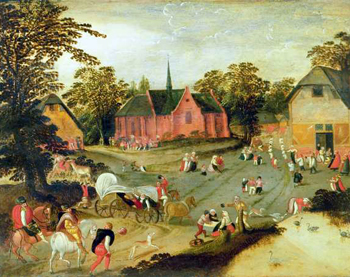
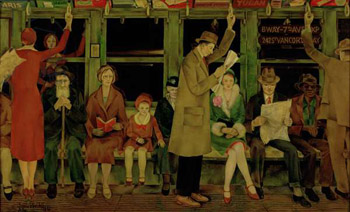 These are the characteristic elements of a society.
These are the characteristic elements of a society.
It is not every gathering of people that constitutes a society. A group of persons who meet in a metro, for example, do not constitute a society. They are not linked together in relationships. Each one buys a ticket to board the metro train but there is no affiliation among them. Each one enters the train, seats himself, travels until he reaches his stop, and then gets off. The end that they pursue is not the same, because they will get out on different stops along the route for different purposes.
Also, only in a very vague sense can we say that they obey the same authority. It is true that they all obey the rules of the metro, which is imposed on everyone who rides it. It is a mechanical programmed discipline that governs the metro. No passenger can make the train stop at a different place or return to a prior stop if he misses his stop; either the passenger exits at the assigned stop or he gets off at the next one and has a long walk to his destination.
There is a sort of internal dynamism in the metro that replaces the authority – it is a despotic authority, by the way – but there is not a person who commands there. The result is that the passengers of a metro do not constitute a society.
A family is a type of society. This is so evident that I dispense from entering into details. A state, a province, a nation are also types of society.
The social fabric is made of relationships
What forms the social fabric in a society?
The social fabric is made of the inter-actions and relationships among the persons: the way they adjust to one another; how they assist and treat one another, the whole web of the relationships they establish among themselves so that some are friends, others are adversaries, still others are indifferent. The social fabric is made up of all these different ways they relate to one another. These millions of invisible threads are woven in such a manner that they constitute what we call the social fabric.
Very large cities like São Paulo and New York do not have a strongly defined and well-constituted social fabric because their multitude of members do not share the same goals or have a homogeneity.
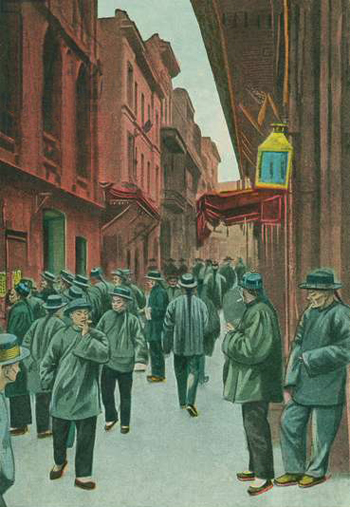 In a large North American city, one can find neighborhoods with powerful and rich social fabrics – a Chinatown, a Black district, a Ukrainian sector or a Filipino community. In these cases, one neighborhood lives parallel to the others without either blending or constituting a single social fabric. They are small groups, each with its own social fabric, but the grand ensemble of the city does not form its own social fabric.
In a large North American city, one can find neighborhoods with powerful and rich social fabrics – a Chinatown, a Black district, a Ukrainian sector or a Filipino community. In these cases, one neighborhood lives parallel to the others without either blending or constituting a single social fabric. They are small groups, each with its own social fabric, but the grand ensemble of the city does not form its own social fabric.
On the other hand, a small village in the countryside – as they exist in every country in the world – where anything that happens in one house is shortly known by all, where people gossip and discuss everything that happens, testifies to a strong homogeneity among the inhabitants. It also reflects a long history of relationships – a tradition, therefore – that surfaces in each new incident. This attests to the existence of a social fabric in a society.
These relationships can be so strong that they can endure for a long time. Let us suppose that an atomic bomb aims to destroy a city with a strong social fabric. Some inhabitants run to the nearby forest and are not affected by the bomb that dropped and actually destroyed the entire city.
In that forest they will carry on some of those relationships they had in the city in order to form a new society. If they are a tribe, their descendents may maintain similar relationships. This goes so far that, after 1,000 years, an empire can rise up from that tribe maintaining the same characteristics of the relationships that existed in the city that was destroyed.
The case of the Gens Sabina
Let me give you an example of how this can happen. After the time of Our Lord Jesus Christ, there was in Rome – in converted Rome – a family of nobles with the name Sabina. A family of nobles in old Rome was called gens, so that family was the Gens Sabina.
Centuries earlier the Gens Sabina had founded a small town on the outskirts of Rome. At a certain moment, for reasons of mutual convenience, Rome and that small town entered into a treatise and united. Members of the Gens Sabina as well as many of the inhabitants of that town moved to live in Rome.
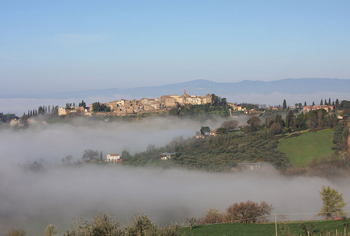 The nobles of that town were incorporated into the Roman nobility. Members of the Gens Sabina became part of the Roman Senate. But they maintained as a symbol of their origin a small silver moon worked in metal that they wore on their clothing and shoes like a pin.
The nobles of that town were incorporated into the Roman nobility. Members of the Gens Sabina became part of the Roman Senate. But they maintained as a symbol of their origin a small silver moon worked in metal that they wore on their clothing and shoes like a pin.
So, 1,000 years after that fusion, members of the Gens Sabina still recalled and commemorated that first social fabric of their original village. They lived in the immense city of Rome, but they were like a drop of olive oil that did not diffuse in the water bowl. They always continued to be the Gens Sabina. They maintained that original social fabric for a long time. This is similar to what happened with the members of the Scottish nobility who moved to London and became part of the Chamber of the Lords.
As one sees, when a social fabric is well-constituted, it can endure for a long time. It can even resist the destructive impact of an atomic bomb, as in the metaphor I proposed above. Revolutionary ways to destroy the social fabric
Is there a way for someone to destroy a rich social fabric?
One means is to approve laws in a country that allow such a great number of foreign persons to immigrate that the locals are reduced to subordinate conditions and the social relationships are affected. The old affiliations lose their vital significance due to the new relationships made between an elite of the foreigners and the locals. With this, marriages between the different peoples and races become the rule and the life of the old city slowly disappears. This is a way to destroy a rich social fabric.
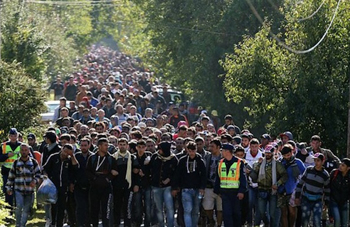 Before the confusion of tongues, all men constituted a homogenous society and lived around the area in Mesopotamia where the Babel Tower was built. Sacred Scripture tells us that, at a given moment, they had a disagreement and the people were dispersed to the furthest regions of the earth.
Before the confusion of tongues, all men constituted a homogenous society and lived around the area in Mesopotamia where the Babel Tower was built. Sacred Scripture tells us that, at a given moment, they had a disagreement and the people were dispersed to the furthest regions of the earth.
This is in fact what happened but we do not know the cause of that disagreement: whether it was an irreconcilable quarrel that generated a furious fight or if a strong discrepancy generated a separation made by common accord, like that between Abraham and Lot. The fact is that a homogenous society gave origin to a heterogeneous society.
I believe that it was the first hypothesis that caused the rupture. That original unity burst like a bomb that scattered its metal shrapnel around the world: Some went to the Strait of Behring and entered the Americas, some to India, others to Africa, etc. Throughout the millennia those human shrapnel established different histories, which were conditioned by their behaviors, environments and genealogies. The quarrel of the Babel Tower represented an ethnic explosion, more terrible than an atomic explosion.
This ethnic explosion is an example – if our interpretation of what took place is correct – of the destruction of a social fabric, which in a certain way is something more profound than the destruction of a society. It was a social change more radical than what would have occurred if all those persons had reunited to build the Babel Tower and died.
Therefore, the more efficient way to destroy a civilization without leaving any memory of what it had been is the destruction of its social fabric.

Posted November 12, 2018
First, it is an ensemble of persons; second, they are joined together to reach the same goal; third, by having a common end they show they have a certain stability; fourth, they need to obey a single government, one same leader who orients the ensemble to achieve their declared goal.

A Flemish village with a distinct social fabric; below, unrelated people on a New York subway

It is not every gathering of people that constitutes a society. A group of persons who meet in a metro, for example, do not constitute a society. They are not linked together in relationships. Each one buys a ticket to board the metro train but there is no affiliation among them. Each one enters the train, seats himself, travels until he reaches his stop, and then gets off. The end that they pursue is not the same, because they will get out on different stops along the route for different purposes.
Also, only in a very vague sense can we say that they obey the same authority. It is true that they all obey the rules of the metro, which is imposed on everyone who rides it. It is a mechanical programmed discipline that governs the metro. No passenger can make the train stop at a different place or return to a prior stop if he misses his stop; either the passenger exits at the assigned stop or he gets off at the next one and has a long walk to his destination.
There is a sort of internal dynamism in the metro that replaces the authority – it is a despotic authority, by the way – but there is not a person who commands there. The result is that the passengers of a metro do not constitute a society.
A family is a type of society. This is so evident that I dispense from entering into details. A state, a province, a nation are also types of society.
The social fabric is made of relationships
What forms the social fabric in a society?
The social fabric is made of the inter-actions and relationships among the persons: the way they adjust to one another; how they assist and treat one another, the whole web of the relationships they establish among themselves so that some are friends, others are adversaries, still others are indifferent. The social fabric is made up of all these different ways they relate to one another. These millions of invisible threads are woven in such a manner that they constitute what we call the social fabric.
Very large cities like São Paulo and New York do not have a strongly defined and well-constituted social fabric because their multitude of members do not share the same goals or have a homogeneity.

Chinatown in New York, 1914
On the other hand, a small village in the countryside – as they exist in every country in the world – where anything that happens in one house is shortly known by all, where people gossip and discuss everything that happens, testifies to a strong homogeneity among the inhabitants. It also reflects a long history of relationships – a tradition, therefore – that surfaces in each new incident. This attests to the existence of a social fabric in a society.
These relationships can be so strong that they can endure for a long time. Let us suppose that an atomic bomb aims to destroy a city with a strong social fabric. Some inhabitants run to the nearby forest and are not affected by the bomb that dropped and actually destroyed the entire city.
In that forest they will carry on some of those relationships they had in the city in order to form a new society. If they are a tribe, their descendents may maintain similar relationships. This goes so far that, after 1,000 years, an empire can rise up from that tribe maintaining the same characteristics of the relationships that existed in the city that was destroyed.
The case of the Gens Sabina
Let me give you an example of how this can happen. After the time of Our Lord Jesus Christ, there was in Rome – in converted Rome – a family of nobles with the name Sabina. A family of nobles in old Rome was called gens, so that family was the Gens Sabina.
Centuries earlier the Gens Sabina had founded a small town on the outskirts of Rome. At a certain moment, for reasons of mutual convenience, Rome and that small town entered into a treatise and united. Members of the Gens Sabina as well as many of the inhabitants of that town moved to live in Rome.

The Sabine Hills were incorporated into Rome, but the people proudly retained their identity
So, 1,000 years after that fusion, members of the Gens Sabina still recalled and commemorated that first social fabric of their original village. They lived in the immense city of Rome, but they were like a drop of olive oil that did not diffuse in the water bowl. They always continued to be the Gens Sabina. They maintained that original social fabric for a long time. This is similar to what happened with the members of the Scottish nobility who moved to London and became part of the Chamber of the Lords.
As one sees, when a social fabric is well-constituted, it can endure for a long time. It can even resist the destructive impact of an atomic bomb, as in the metaphor I proposed above. Revolutionary ways to destroy the social fabric
Is there a way for someone to destroy a rich social fabric?
One means is to approve laws in a country that allow such a great number of foreign persons to immigrate that the locals are reduced to subordinate conditions and the social relationships are affected. The old affiliations lose their vital significance due to the new relationships made between an elite of the foreigners and the locals. With this, marriages between the different peoples and races become the rule and the life of the old city slowly disappears. This is a way to destroy a rich social fabric.

Muslim immigrants crossing Germany's border: a threat to the social fabric of the nation
This is in fact what happened but we do not know the cause of that disagreement: whether it was an irreconcilable quarrel that generated a furious fight or if a strong discrepancy generated a separation made by common accord, like that between Abraham and Lot. The fact is that a homogenous society gave origin to a heterogeneous society.
I believe that it was the first hypothesis that caused the rupture. That original unity burst like a bomb that scattered its metal shrapnel around the world: Some went to the Strait of Behring and entered the Americas, some to India, others to Africa, etc. Throughout the millennia those human shrapnel established different histories, which were conditioned by their behaviors, environments and genealogies. The quarrel of the Babel Tower represented an ethnic explosion, more terrible than an atomic explosion.
This ethnic explosion is an example – if our interpretation of what took place is correct – of the destruction of a social fabric, which in a certain way is something more profound than the destruction of a society. It was a social change more radical than what would have occurred if all those persons had reunited to build the Babel Tower and died.
Therefore, the more efficient way to destroy a civilization without leaving any memory of what it had been is the destruction of its social fabric.

Posted November 12, 2018
Organic Society was a theme dear to the late Prof. Plinio Corrêa de Oliveira. He addressed this topic on countless occasions during his life - at times in lectures for the formation of his disciples, at times in meetings with friends who gathered to study the social aspects and history of Christendom, at times just in passing.
Prof. Plinio
Atila S. Guimarães selected excerpts of these lectures and conversations from the transcripts of tapes and his own personal notes. He translated and adapted them into articles for the TIA website. In these texts fidelity to the original ideas and words is kept as much as possible.
______________________
______________________
 Volume I |
 Volume II |
 Volume III |
 Volume IV |
 Volume V |
 Volume VI |
 Volume VII |
 Volume VIII |
 Volume IX |
 Volume XI |
 Special Edition |
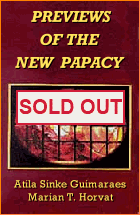 Special Edition |



